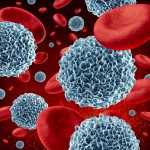 A technique for genetically modifying the immune cells of people with HIV to resist the virus has shown promise in an early safety trial, raising the hope that such treatment may one day offer an alternative to daily antiretroviral (ARV) therapy, The New York Times reports. As described in The New England Journal of Medicine, investigators used Sangamo BioSciences’ zinc-finger nucleases (ZFNs) technology to manipulate CD4 cell genes.
A technique for genetically modifying the immune cells of people with HIV to resist the virus has shown promise in an early safety trial, raising the hope that such treatment may one day offer an alternative to daily antiretroviral (ARV) therapy, The New York Times reports. As described in The New England Journal of Medicine, investigators used Sangamo BioSciences’ zinc-finger nucleases (ZFNs) technology to manipulate CD4 cell genes.
Researchers drew CD4 cells from 12 HIV-positive participants on stable ARVs and used the ZFN tool to edit the cells’ genetic code for the CCR5 receptor so as to resist the virus. Most variants of HIV must use the CCR5 receptor in order to enter the cell. The investigators then prompted the cells to multiply and eventually infused each participant with 10 billion of their own CD4 cells, about a fifth of which had a mutated CCR5 gene.
After four weeks, six of the participants stopped taking their ARVs in a planned treatment interruption that was intended to last 12 weeks. All of their viral loads were undetectable at the beginning of the treatment interruption and eventually became detectable before they returned to HIV therapy. Two began ARVs again eight weeks into the interruption because of rapidly rising viral loads.
On average, the peak viral loads of the four participants who completed the full 12-week interruption were more than 90 percent lower than their pre-ARV peak levels. In one of the participants, who the investigators discovered already had the beneficial CCR5 mutation in half of his or her genes, the viral load peaked at 6,247 at week six, after which it declined to an undetectable level.
Investigators concluded that the treatment was generally safe and that the modified CD4s appeared to be resistant to HIV.
To read the study abstract, click here.
To read the National Institutes of Health press release, click here.
To read the NY Times story, click here.
Advertisement
Advertisement
Advertisement






Comments
Comments